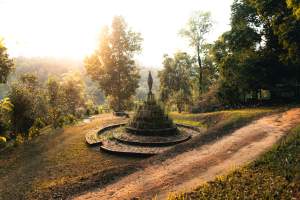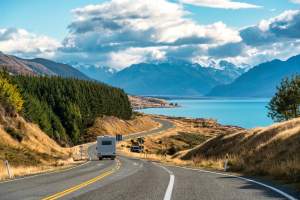
There’s travel that shows you new places. Then there’s travel that shows you new ways of being. Spending a week with a nomadic tribe doesn’t just pull you off the grid — it puts you in the middle of a rhythm that hasn’t changed in generations. And it doesn’t revolve around your to-do list, your time zone, or your phone.
Living with nomads is not a curated experience. It’s not a staged reenactment or an anthropological display. It’s life — stripped down, moving slowly, connected to land, weather, and tradition. You’re not there to observe from a distance. You’re there to participate. To carry water. To help herd goats. To try (and fail) to sit cross-legged for hours around a fire. To listen, adapt, and learn.
Here’s what it’s really like to live with a nomadic tribe for a week — what you’ll do, what you’ll feel, and how it changes your sense of what “enough” really means.
Where This Happens
Nomadic communities exist in various forms across the world, and some — with great care and mutual respect — offer opportunities for outsiders to live alongside them for short periods. A few examples:
- The Mongolian herders of the Central Asian steppes
- The Berber (Amazigh) tribes of Morocco’s Atlas Mountains and Sahara fringe
- The Sami people in northern Scandinavia, who herd reindeer across snow-covered landscapes
- The Maasai of Kenya and Tanzania, some of whom still live semi-nomadically in ancestral lands
- The Nenets of Siberia, who migrate thousands of reindeer across the Arctic tundra
Each culture is distinct, but the common thread is a way of life shaped by mobility, self-reliance, and a deep relationship with the land.
How You Get There
It’s not a place you find on Google Maps. Getting to a nomadic camp typically involves a long drive — often followed by an off-road journey, a river crossing, or a hike. Your arrival isn’t about checking in. It’s about showing up.
Sometimes, you’re connected through a nonprofit, a cultural immersion program, or a local guide with strong community ties. The best setups are built on mutual respect, not voyeurism. You’re not there for photos. You’re there to be useful, present, and open.
The First 24 Hours: Welcome to Another Rhythm
The first thing you’ll notice: silence.
No motors. No notifications. No ambient electricity hum. Just wind, footsteps, animals, fire. It’s disorienting at first — not because it’s harsh, but because your senses have to recalibrate.
You’re welcomed in simple, sincere ways: tea in a tin cup, a gesture toward the fire, a place to sit. Names are exchanged. Smiles fill the space where language can’t. You learn quickly that hospitality here isn’t transactional — it’s identity. Sharing is a way of life.
And then, you get to work.
Daily Life: What You’ll Actually Be Doing
Nomadic life is physical. Everyone has a job. Nothing gets done unless hands make it happen.
Mornings:
- Rise with the sun — or earlier.
- Milk the goats or camels.
- Start the fire, boil water, knead dough.
- Help pack up the tent if the camp is moving that day.
Midday:
- Carry water (sometimes far).
- Gather brushwood or dung for fuel.
- Watch or assist with herding duties.
- Learn how meals are prepared from scratch, without modern tools.
Evenings:
- Cook with the family — flatbreads, stews, meat if there’s a celebration.
- Sit around the fire.
- Share stories, music, or just stare into the coals.
- Sleep early, usually on mats or rugs under shared blankets or skins.
There’s downtime, but it’s not wasted time. It’s time to mend clothing, play with kids, share food, or simply be still. Nomadic life isn’t rushed. But it’s never idle.
The Living Conditions
- Shelter: Tents made of felt, hides, or woven fabric — sometimes yurts, sometimes low, wind-blocking structures. Simple but surprisingly warm.
- Beds: Floor mats, sheepskins, or rugs. No mattresses. No pillows unless you brought your own.
- Food: Think hearty and elemental — flatbreads, milk, rice, root vegetables, dried meats, wild herbs.
- Water: Carried in from a well or stream. Always precious. Nothing is wasted.
- Toilets: There aren’t any. You find a bush or a quiet patch of land, and you learn quickly how to make it work.
Comfort isn’t the goal. Function is. And soon, you adapt.
The People
You don’t speak the same language. But you don’t need to.
You learn through watching, imitating, and failing with good humor. Gestures become sentences. Laughs become bonds. Kids often become your first teachers — fearless, curious, and quick to correct you when you try to do something the wrong way.
Elders carry stories in their eyes. Their movements are efficient, shaped by decades of repetition. No one brags. No one performs. They just live — with a level of presence that’s hard to fake.
The Lessons That Land Hard
By day three, things shift. You stop noticing the dirt under your fingernails. You stop checking your watch. You start understanding the rhythm: eat when there’s food, sleep when you’re tired, help without asking.
You realize how much of your own life is noise — background apps, internal monologues, invisible stressors. Here, everything is visible. Hunger. Effort. Gratitude. It’s all out in the open.
You also start to understand what wealth looks like in a different context. It’s not stuff. It’s resourcefulness, resilience, and relational depth. It’s knowing the land, knowing your animals, and being known by your people.
Challenges You’ll Face
- Communication gaps. Frustrating at first, but eye-opening once you lean into observation.
- Physical strain. Your body will feel it — squatting, carrying, constant movement.
- Diet adjustment. Simple, sometimes repetitive, and not always what your stomach expects.
- Hygiene. Showers are rare. Wet wipes are gold. Get over it.
- Mental withdrawal. The absence of digital stimulation is both painful and freeing.
What You Leave With
- A reset nervous system.
- A new definition of “enough.”
- A handful of phrases in a language you didn’t know existed last week.
- Friendships built on shared labor, not small talk.
- A quieter, steadier version of yourself.
How to Do It Ethically
- Go through trusted, community-approved programs.
- Stay longer if you can — a few days isn’t enough.
- Be useful. Don’t expect to be waited on.
- Ask before photographing. Always.
- Support the community — financially, respectfully, and sustainably.
This isn’t a theme park. This is someone’s life. Treat it that way.
Living with a nomadic tribe for a week doesn’t change the world — but it will change yours. It strips away the noise and makes room for presence. It puts you in a place where nothing is performative, everything is earned, and meaning lives in the simplest acts: making fire, sharing food, walking side by side.
It’s not comfortable. It’s not easy. But it’s real. And in a world full of curated experiences, that kind of realness is rare enough to chase.







